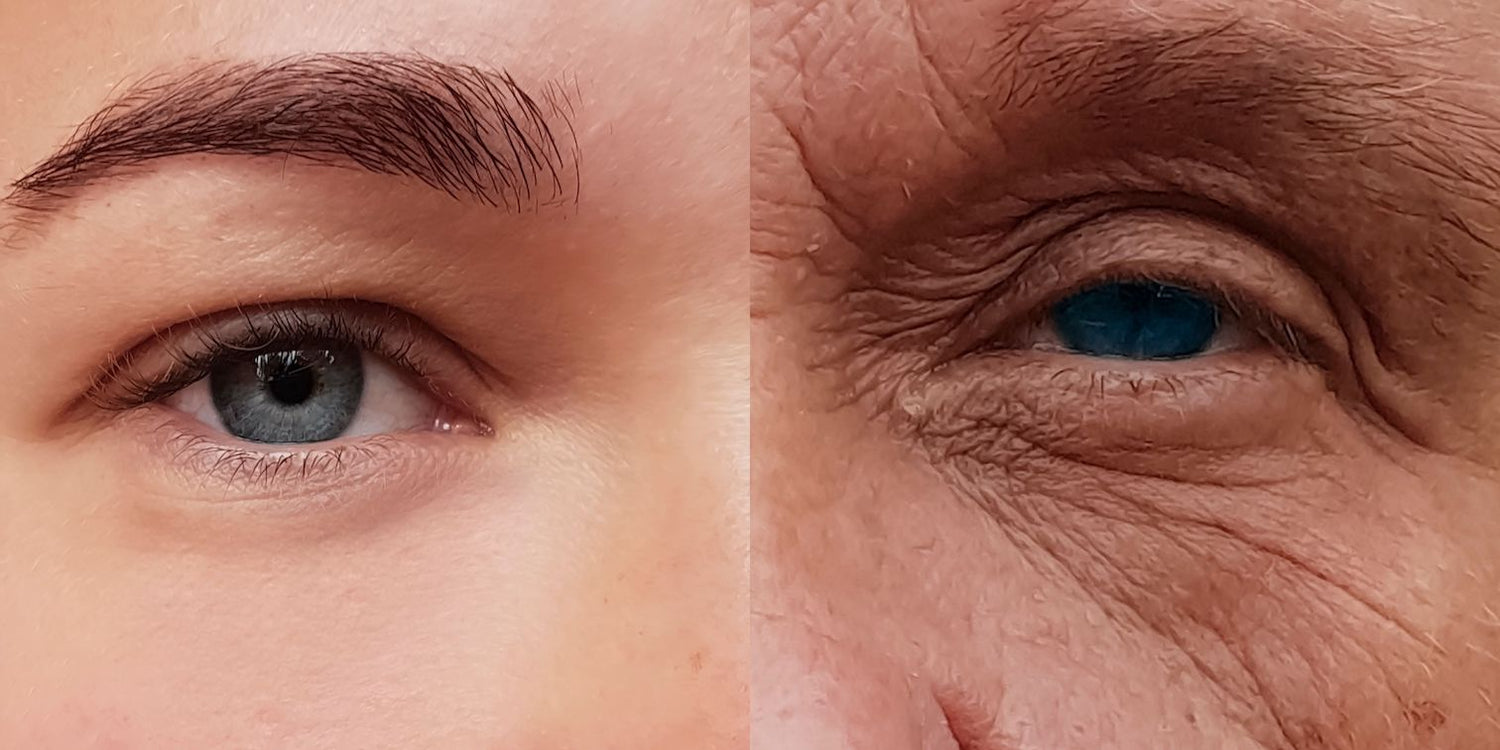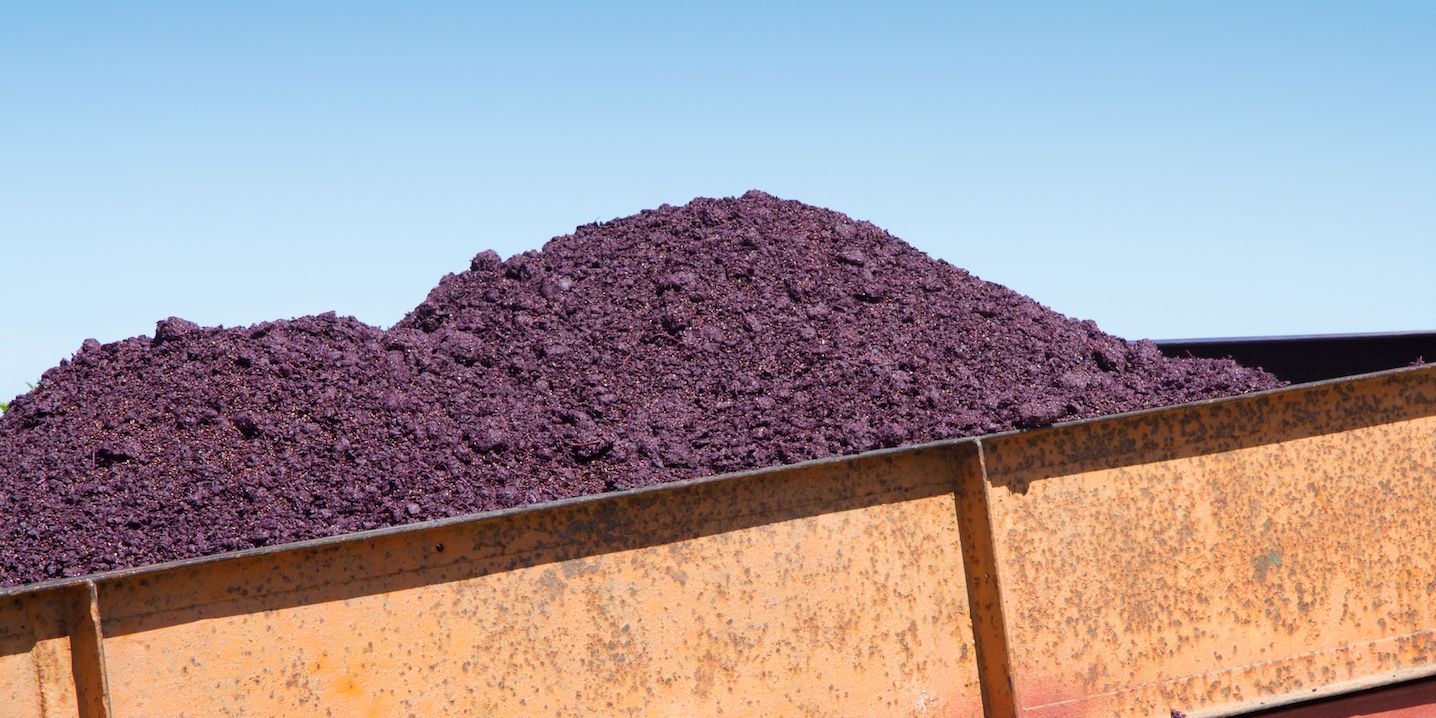In this article, we explore how to harness the properties of grapes for your beauty and well-being while directly contributing to environmental wellness.
Winemaking generates substantial waste every year. It is now imperative to address this waste sustainably, with a zero-waste circular economy perspective.
Winemaking Residues
What happens to these residues? Most viticulturists send grape pomace to distilleries for grappa production, while stems, lees, and wastewater are typically discarded as waste (source: ENEA research, 2018).
However, present-day challenges demand finding the best way to recover winemaking waste and transform it into high added-value products (upcycling versus recycling). This not only reduces waste but also lowers the costs associated with disposal.
A Few Figures
Grapes are one of the most widespread crops globally, with approximately 80% of the total harvest dedicated to wine production. Worldwide wine production in 2022 amounted to 258 million hectoliters, with around 160 million hectoliters produced in Europe, while Italy's production stood at approximately 47,000 hectoliters.
Grape Pomace: A Challenge for Wineries
Disposing of winemaking residues is expensive because the spreadable quantities of grape pomace are subject to restrictions (as they risk increasing soil salinity and heavy metal content due to high nitrogen levels - which, according to the Nitrate Directive, should not exceed 50 kg/ha of phosphorus). The preparation of compost is hindered by the polyphenols present in grape pomace, which, being antiseptic, inhibit the microorganisms involved in the composting process, resulting in an unsuitable product.
The industry generates enormous amounts of solid waste, which is costly to dispose of. These include unripe grapes, leaves, grape pomace, grape seeds, stems, lees, and winery effluents. Only for the winemaking industry, some estimates suggest an annual availability of over 7 million quintals of unused grape pomace, accounting for three-quarters of their volume.
Addressing their disposal innovatively, but more importantly, their recovery and valorization is necessary. We need to address their environmental impact.
Enological Waste Becomes Opportunity
Research shows that grape pomace is rich in antioxidant properties even after grappa production when it is generally discarded (Effect of the distillation process on polyphenols content of grape pomace, Miluska Cisneros‐Yupanqui, Corrado Rizzi, Dasha Mihaylova, Anna Lante, 2021).
Winemaking residues also contain many bioactive molecules that can be used in the fields of nutraceuticals (which studies foods that promote health) and cosmetics.
With this objective in mind, Grapey was created to recycle winemaking residues, giving them new life by creating highly specific and effective green cosmetics.
Green Cosmetics
"Green Cosmetic Chemistry" involves creating cosmetics that respect the environment and biodiversity through the study, design, and development of new ingredients, formulas, and sustainable processes, reducing energy consumption, and utilizing raw materials from renewable natural resources, ideally locally sourced. Moreover, when these ingredients are by-products, such as leftovers from agri-food production, the environmental benefits are even greater.
By converting by-products into raw materials (renewable resources) with high added value, the concept of a circular economy is applied. This allows the recovery of compounds like polyphenols, which have interesting cosmeceutical and nutraceutical properties.
Enological Residues as Sources of Active Ingredients for the Skin
Enological residues are rich in recoverable bioactive molecules. These include polyunsaturated fatty acids (PUFAs), pigments, proteins, phenolic compounds, and vitamins.
The polyphenolic compounds in lees determine the color, intensity, and organoleptic properties of wine. During winemaking, biochemical processes activate in the lees, converting phenols into high added-value polyphenolic compounds (including gallic acid, ellagic acid, catechin, caffeic acid, resveratrol). Polyphenols are rich in skin care benefits.
Unripe Grapes
In high-quality wine production, unripe grapes are thinned directly in the vineyard to ensure higher sugar content in the remaining clusters.
Discarded unripe grapes can be a source of highly effective antioxidant phyto-complexes. They contain a high number of extremely vital cells that can be used to obtain stem cells and produce G-CELL, an extremely effective antioxidant active ingredient capable of countering free radicals. Its application in cosmetic formulations is powerful because it dramatically increases the skin's antioxidant capacity, providing effective protection against free radicals.
Grape Pomace
Grape pomace is what remains after grape pressing: the skins and seeds of the grapes.
The skin protects the grapes throughout their growth on the vine, providing an effective shield against UV exposure, pathogen attacks, environmental pollution, and adverse weather conditions. The thousands of molecules that grapes can synthesize and accumulate in the skin are the secret to these defenses.
Grape pomace at the end of the winemaking process, even after grappa production, contains significant amounts of bioactive substances beneficial to human health: fibers, tannins, other polyphenolic substances, and a good percentage of fats, sugars, and tartaric acid salts.
Indeed, polyphenols are not uniformly distributed in different parts of the grape: while the pulp contains almost none, the highest concentrations are found in the skin and seeds.
Particularly interesting molecules include:
- Rutin: a glycoside with potential significance in inhibiting certain types of cancer;
- Quercetin: one of the major flavonoids with anti-inflammatory properties and cancer-fighting potential;
- Resveratrol: a natural phytoalexin produced by the vine as a defense against pathogens like bacteria or fungi, providing antioxidant, anti-inflammatory, vasodilatory effects with improved skin microcirculation, eudermic effects due to increased collagen synthesis, and anti-thrombotic properties. Resveratrol has gained considerable attention for its potential anti-cancer properties, particularly as a chemopreventive agent.
Properties of Grape Pomace
As we have seen, in the wine industry, grape pomace is costly to dispose of but is still rich in phenols and polyphenols, both free and complex. On one hand, they are considered pollutants because they increase chemical and biochemical oxygen demand, harming the flora and fauna in discharge areas, but, as we have seen, they are also among the main contributors to health benefits due to their antioxidant activity.
One of the most interesting applications for grape pomace is indeed the cosmetic field. Grape pomace can become essential components of creams with anti-aging, purifying, moisturizing, and toning functions for the face and body. Being rich in polyphenols, they exert anti-inflammatory and free radical-fighting effects, actively working against skin aging.
For this reason, at Grapey, we have created a specific cream for women, derived from grape active ingredients: a highly effective, anti-aging, and moisturizing product. Grapey Anti-age is suitable for those who want to combat the signs of aging, from expression lines to wrinkles, while deeply hydrating and revitalizing their skin naturally.

Grape Seeds
These are the grape berry seeds, from which an oil of great nutritional value is extracted, widely used in cosmetics and food. Cold-pressed, it is particularly rich in antioxidants (e.g., resveratrol, linoleic acid), emollients, and has been shown to be a possible remedy for visual, cardiovascular, lymphatic disorders, relief from premenstrual syndrome, and cancer prevention.
Inside grape seed by-products are:
- PUFAs: polyunsaturated fatty acids ω-3 and ω-6 such as oleic acid, linoleic acid, stearic acid, and palmitic acid. PUFAs are essential for the body's functioning and health due to their antibacterial, antifungal, and antioxidant properties;
- Squalene: a bioactive lipid with antioxidant, immunomodulatory, xenobiotic detoxification, and antitumor properties.
Due to these properties, neutral scent, and high stability, they are ideal for highly effective cosmetic formulations. Therefore, at Grapey, we have created a specific product for men derived from grape seed active ingredients: a highly effective, revitalizing, and anti-aging product. Grapey Total Revitalizer for Men is suitable for those with dull skin who want to hydrate it naturally and start fighting the signs of aging.

Stems
Stems are the woody structure that forms the core of grape clusters. They are often reused in animal feed production and for soil care.
However, they are interesting as a source of dietary fiber and antioxidants. The polyphenol content consists mainly of flavan-3-ols, monomeric and oligomeric flavonols, belonging to the flavonoid class, and hydroxycinnamic acids and stilbenes belonging to the non-flavonoid class.
Leaves
Grapevine leaves can be considered on par with stems and are rich in: organic acids, phenolic acids, flavonols, tannins, proanthocyanidins, anthocyanins, lipids, enzymes, vitamins, carotenoids, terpenes, and reducing or non-reducing sugars.
Lees
Lees are the residue deposited after wine fermentation, primarily composed of spent yeasts, tartrates, and impurities derived from grapes. Lees have traditionally been a fundamental raw material for the production of ethanol and tartaric acid. The latter has many applications in the food industry, as an excellent stabilizer, replacing citric acid, with antioxidant, anti-inflammatory, anti-tumor, and cardiovascular disease prevention properties.
Some acids, like gallic acid, along with other phenolic extracts, seem to have the ability to counter bacterial adhesion to tooth enamel, prompting interest in the production of functional foods, such as chewing gum.
Would you like to try highly effective natural cosmetics derived from winemaking residues rich in active compounds? Discover the whole range of Grapey products!
If you want to make the right choice for the well-being of your skin and the environment, Grapey is the answer!
For more information or questions, please don't hesitate to contact us: info@grapey.bio




Leave a comment
This site is protected by hCaptcha and the hCaptcha Privacy Policy and Terms of Service apply.